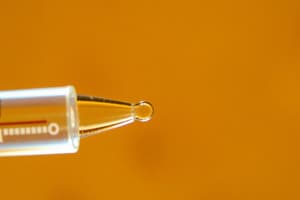Podcast
Questions and Answers
What is the condition called when the cell membrane and cytoplasm shrink away from the cell wall?
What is the condition called when the cell membrane and cytoplasm shrink away from the cell wall?
- Cytolysis
- Plasmoptysis
- Hypolysis
- Plasmolysis (correct)
In which type of solution would a bacterial cell likely burst if it lacks a rigid cell wall?
In which type of solution would a bacterial cell likely burst if it lacks a rigid cell wall?
- Isotonic solution
- Alkaline solution
- Hypotonic solution (correct)
- Hypertonic solution
What is the term for organisms that prefer to live in salty environments?
What is the term for organisms that prefer to live in salty environments?
- Halophilic organisms (correct)
- Acidophiles
- Haloduric organisms
- Alkaliphiles
Microbes capable of surviving in high atmospheric pressure are known as what?
Microbes capable of surviving in high atmospheric pressure are known as what?
What happens if a bacterial cell is placed in an isotonic solution?
What happens if a bacterial cell is placed in an isotonic solution?
If the concentration of solutes outside a cell is greater than inside, what kind of solution is it?
If the concentration of solutes outside a cell is greater than inside, what kind of solution is it?
Which type of microorganism prefers cold temperatures, such as deep ocean water?
Which type of microorganism prefers cold temperatures, such as deep ocean water?
What is the preferred pH range for most microorganisms in terms of growth medium?
What is the preferred pH range for most microorganisms in terms of growth medium?
What happens when the concentration of solutes in the external environment of a cell is greater than that inside the cell?
What happens when the concentration of solutes in the external environment of a cell is greater than that inside the cell?
What is the preferred pH range for Acidophiles?
What is the preferred pH range for Acidophiles?
Which microorganism group prefers warm temperatures but can endure very cold or freezing temperatures?
Which microorganism group prefers warm temperatures but can endure very cold or freezing temperatures?
What is the term for the movement of a solvent from a lower to a higher concentration of solutes through a permeable membrane?
What is the term for the movement of a solvent from a lower to a higher concentration of solutes through a permeable membrane?
What is the term for microorganisms that grow best at high temperatures?
What is the term for microorganisms that grow best at high temperatures?
Which type of microorganism is most likely to thrive in a hypertonic solution?
Which type of microorganism is most likely to thrive in a hypertonic solution?
At what temperature would a mesophile likely exhibit optimal growth?
At what temperature would a mesophile likely exhibit optimal growth?
Which pH range is generally preferred by acidophiles for growth?
Which pH range is generally preferred by acidophiles for growth?
How do hypertonic solutions affect microbial cells?
How do hypertonic solutions affect microbial cells?
Which would be the best environment for alkaliphiles to grow successfully?
Which would be the best environment for alkaliphiles to grow successfully?
Flashcards are hidden until you start studying
Study Notes
- Plasmolysis occurs when bacteria with rigid cell walls are placed in a hypertonic solution, causing the cell membrane and cytoplasm to shrink away from the cell wall.
- A hypotonic solution has a lower solute concentration outside the cell compared to inside, potentially leading to plasmoptysis if a bacterial cell bursts.
- Isotonic solutions have equal solute concentrations inside and outside the cell, affecting microbial growth.
- Halophilic organisms thrive in salty environments, while haloduric organisms can survive but do not prefer salty conditions.
- Piezophiles are microbes that can survive in high atmospheric pressure environments exceeding 14.7 psi.
Studying That Suits You
Use AI to generate personalized quizzes and flashcards to suit your learning preferences.




